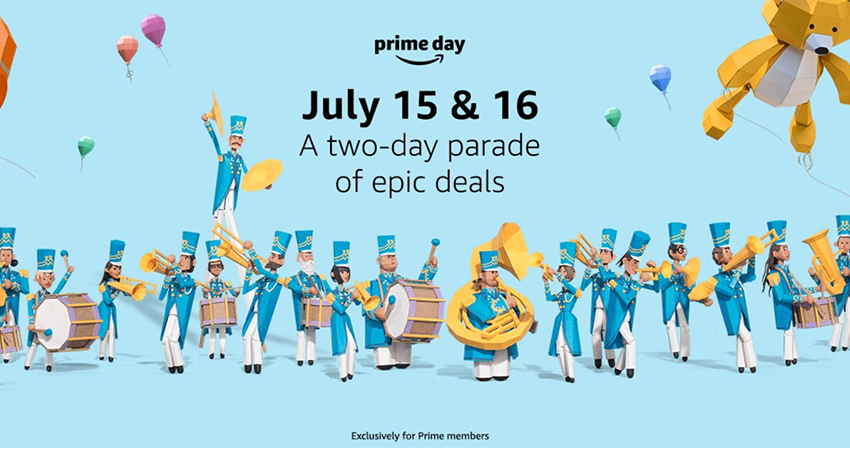Amazon announced Prime Day will be a two-day event starting at midnight on July 15. If you think that somehow this concocted shopping holiday has lost steam over the years, you’d be mistaken.
A study by Profitero found that 62% of Prime members in the U.S. and 50% of those in the U.K. agree that Prime Day 2019 deals will live up to the hype. Seventy-six percent of U.S. Prime members appear ready to grab a Prime Day bargain this year, up from 63% who shopped it in 2018.
The appeal of Prime Day seems to be expanding across the pond as well. The percentage of U.K. Prime members shopping on Prime Day is set to jump from 52% in 2018 to 67% this year.
The survey found that more than half of Prime members in the U.S. and the UK who bought something during Prime Day (56% and 53%, respectively) plan to spend more this year.
It also found that once again this year, more retailers are expected to try to take advantage of Prime Day buzz and the prevailing buying mood. Of those planning to shop on Prime Day, more than a third (34% in the U.S. and 38% in the UK) intend to shop for deals at other online retailers.
In fact, eBay announced it would launch “crash sales” as early as July 1st. On July 15, eBay will offer from major brands like Apple, Samsung and LG. Target announced it is planning to do “deal days” on July 15 and 16, according to CNBC.
“July has become a massive shopping season,” Jay Hanson, vice president and chief operating officer of eBay’s Americas division told CNBC.
Bricks-and-mortar stores shouldn’t be counted out. Seventeen percent of Prime members in the U.S. and 12% in the UK will look for deals in physical stores.
Fifty-eight percent of Prime members in the U.S. and 59% in the UK said they compare prices on other sites first before buying a Prime Day deal on Amazon, according to the study.
On Prime Day 2018, Amazon sales in the UK spiked 298% compared with an average sales day, while up 215% in the U.S. Electronics is expected to be the best selling category in 2019, with almost three-quarters of those intending to shop on Prime Day (71% in the U.S. and 72% in the UK) planning to shop for gadgets.
Grocery is a smaller but growing category on Prime Day, with 24% of U.S. Prime members and 18% of those in the UK planning those purchases this year. Amazon of course will expand Prime Day deals inside Whole Foods stores to capture more of this interest.
The survey revealed that 56% of Prime members in the U.S. and 50% in the U.K. are likely to try a product they don’t normally buy if offered a Prime Day discount.
When it comes to discounts, brands don’t need to break the bank to play on Prime Day. While big discounts like 40%-50% off can provide huge rewards, the study found brands offering a modest discount of up to 20% off can see a 2x sales lift.
About half of the Prime members in both countries said they usually make an unplanned purchase on Prime Day. This is why it’s important to get stock levels in order now, or plan an inventory backstop.
Prime Day is an opportunity for small brands to shine. Amazon said SMB merchants exceeded $1 billion in sales during Prime Day 2018, a trend that is expected to continue this year.
Profitero found 66% of products that saw a lift in traffic during Prime Day 2018 benefited from the Prime Day “halo effect” that lasted two weeks after the event.
RetailMeNot predicted in its own survey, that 250 retailers will participate in Prime Day. Eighty-four percent of retailers say Prime week is the most important time for driving online sales during the entire back-to-school shopping season. It also predicts that Prime Day will see a 30% growth in 2019.

